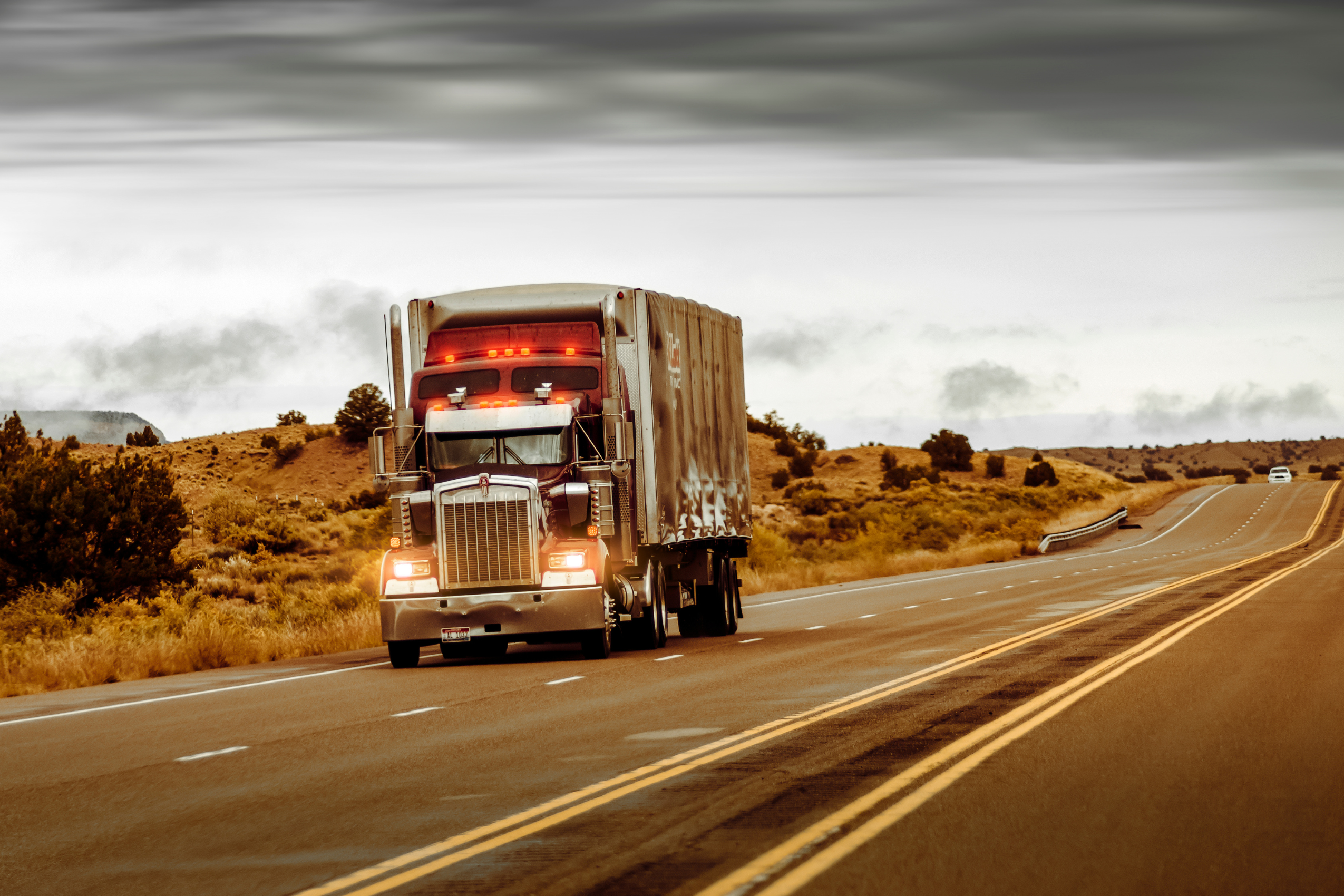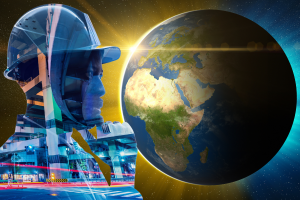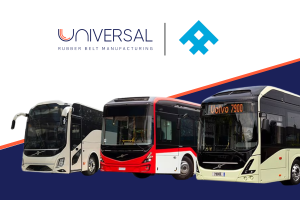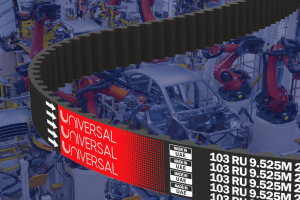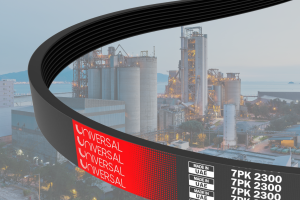Designing belt drives for extreme heat requires deep understanding of material science and thermal management. Operating industrial belt drives in desert or extreme heat environments is not a trivial task. High ambient temperatures, intense solar radiation, and dust-laden air all combine to create one of the harshest operational conditions imaginable for rotating machinery. The challenge goes far beyond the mechanical — it involves chemistry, thermodynamics, and material science. Belt drives are popular for their efficiency, flexibility, and simplicity. Yet under sustained high heat, even the most durable rubber or polymer belts can deteriorate rapidly. Designing a system that remains reliable in such punishing conditions requires understanding how heat affects belt behavior, and applying lessons learned from real-world desert applications. This article explores the engineering principles behind high-temperature belt drive design, discusses key design considerations, and provides best practices derived from field experience in desert environments.
Challenges in Designing Belt Drives for Extreme Heat
Sources of Heat Stress
In a desert environment, a belt drive can experience heat from multiple sources simultaneously:
- Ambient air temperature: Desert air can exceed 50°C during the day, and metal surfaces often reach much higher.
- Solar radiation: Direct sunlight can rapidly elevate the surface temperature of belts and pulleys.
- Internal friction: Every belt drive produces frictional heat as the belt flexes and grips pulleys.
- Radiant heat from nearby machines: Engines, compressors, and turbines radiate additional heat that can be absorbed by the belt.
- Reduced cooling: Calm or enclosed conditions can prevent convective cooling, trapping heat around the drive assembly.
These factors combine to push the belt’s operating temperature well beyond its rated limit if not managed correctly. When operating belt drives in extreme heat, internal friction becomes the silent killer if tension isn’t managed precisely.
How Heat Affects Belt Performance
Excessive heat accelerates degradation in several ways:
- Rubber aging and hardening – Prolonged exposure to high temperature causes elastomer chains to cross-link excessively, leading to brittleness and cracking.
- Loss of flexibility – Reduced elasticity makes the belt less capable of conforming to pulley surfaces, leading to slippage and vibration.
- Creep and elongation – Heat weakens the internal reinforcement cords, allowing excessive stretch and loss of tension.
- Reduced friction coefficient – Hot surfaces may glaze or oxidize, reducing the grip between belt and pulley.
- Delamination – Different thermal expansion rates in the belt’s composite layers can cause separation or blistering.
- Accelerated wear – Heat softens the belt surface, making it more susceptible to abrasion from dust and sand.
As a result, belts that might last several years in a temperate plant could fail within months in desert conditions unless designed and maintained appropriately.
Selecting the Right Belt Materials
Material selection is the foundation of heat-resistant belt drive design. Not all belts are created equal, and material chemistry determines the system’s survival rate in extreme heat.
Common High-Temperature Belt Compounds
- EPDM (Ethylene Propylene Diene Monomer):
Excellent resistance to ozone, weathering, and heat up to around 120°C. Suitable for general industrial applications and long outdoor exposure. - HNBR (Hydrogenated Nitrile Rubber):
Offers strong resistance to oil, heat, and oxidation. Commonly used in timing and serpentine belts for automotive and compressor systems in hot climates. - Silicone Elastomers:
Exceptional thermal stability (up to ~200°C), ideal for continuous high-heat exposure where flexibility is critical. - Fluorocarbon / FKM Compounds:
Designed for chemical resistance and extreme heat, though generally used in specialized environments where cost is less of a concern. - Polyurethane Belts:
Durable and wear-resistant, though most standard PU formulations handle moderate rather than extreme temperatures unless modified. - Metal Belts:
Stainless or nickel-based steel belts can tolerate extreme heat beyond 300°C, though they require precision alignment and careful pulley design.
Reinforcement Cords and Fabrics
The belt’s tensile strength and dimensional stability depend heavily on its reinforcement layer. Options include:
- Aramid (Kevlar): Low stretch and high strength, performs well in both high temperature and dusty environments.
- Fiberglass: Stable at high temperatures but may become brittle if repeatedly flexed.
- Steel Cord: Best for high-torque, high-heat applications, though heavier and more rigid.
- Cotton or Polyester: Economical options for moderate temperature use, not ideal for prolonged desert exposure.
Surface Coatings and Treatments
In desert heat, reflection and protection are just as important as raw material resistance. Adding a reflective outer layer or a heat-dissipating top cover can dramatically reduce temperature buildup. Common techniques include:
- Light-colored or metallic surface coatings to reflect sunlight.
- Ceramic-filled top layers to reduce radiant absorption.
- Dust-resistant surface finishes to minimize abrasion damage.
Pulley Design for Belt Drives in Extreme Heat
Even the best belt materials will fail early if the pulley system is not engineered for desert performance.
Pulley Sizing and Geometry
Larger pulley diameters significantly reduce belt flexing and internal heating. A generous bend radius lowers strain per cycle, extending belt life. For systems operating continuously in high heat, oversized pulleys are often a cost-effective reliability improvement.
Ventilation and Airflow
Open or finned pulley designs encourage air circulation and cooling. When feasible, the entire drive system should be positioned to benefit from prevailing airflow or equipped with forced ventilation.
Alignment and Precision
Misalignment magnifies friction, heating, and edge wear. Extreme temperatures may cause frames or shafts to expand, altering alignment over time. Precision-machined components and adjustable mounts are critical to maintaining stable geometry.
Material of Pulleys
High-temperature-resistant metals such as stainless steel or hard-anodized aluminum are preferred. Avoid materials that warp or oxidize easily. Surface finish should be smooth to prevent frictional heat and belt wear.
Managing Tension and Thermal Expansion
Tension control is one of the most important factors in desert belt drive design. Incorrect tension — whether too high or too low — can accelerate wear and heating.
Key Tensioning Principles
- Start with manufacturer-specified tension.
Over-tensioning increases bearing load and internal heat, while under-tensioning leads to slippage. - Allow for thermal expansion.
Both belt and pulley materials expand when heated. Use automatic or spring-loaded tensioners that compensate for these dimensional changes. - Plan for creep.
Belts in high-heat conditions experience greater long-term stretch. Implement an inspection and retensioning schedule to maintain performance. - Use stable reinforcement materials.
Low-creep cords such as aramid or steel provide better long-term stability under heat stress.
Cooling and Thermal Control Strategies
When natural airflow is insufficient, active cooling strategies help control belt temperature and prevent premature aging.
Passive Cooling Measures
- Shade and Covers:
Simple overhead shielding can prevent direct sunlight and reduce radiant heating by tens of degrees. - Ventilated Guards:
Protective guards that allow airflow strike a balance between safety and cooling efficiency. - Reflective Surfaces:
Painting surrounding metalwork with reflective coatings can lower the local temperature around the drive.
Active Cooling Methods
- Forced Airflow:
Fans or blowers can move cooler air across the belt drive, accelerating heat removal. - Heat Sinks:
Pulley fins or external radiating plates increase surface area for dissipation. - Air Ducting:
Ducts can guide airflow from cooler regions or intake systems toward the belt assembly. - Water or Mist Cooling:
In specialized setups, controlled mist cooling can be applied, but only with materials designed for moisture exposure.
Effective thermal management is often the most practical way to extend belt life in desert regions.
Dust, Sand, and Environmental Protection
Heat is only part of the desert challenge. Dust and sand particles act like abrasives, eroding belts, pulleys, and bearings.
Design Recommendations
- Use enclosed or semi-enclosed guards that block direct particle entry.
- Install air filters if forced ventilation is used.
- Choose abrasion-resistant belt surfaces.
- Seal bearings and lubrication points to prevent contamination.
- Regularly clean the drive system to remove deposited sand and debris.
The goal is to prevent abrasive dust from reaching moving parts while allowing sufficient airflow for cooling.
Monitoring and Maintenance
Extreme environments demand proactive monitoring. Waiting for failure signs often leads to unplanned downtime.
Key Monitoring Techniques
- Temperature Tracking:
Use infrared sensors or temperature labels on the belt surface and pulleys to detect hot spots. - Tension Checks:
Measure tension periodically with a calibrated gauge or vibration-based system. - Visual Inspection:
Look for glazing, cracking, edge fraying, or discoloration — all early indicators of heat stress. - Acoustic and Vibration Monitoring:
Changes in operating sound or vibration often precede mechanical failure. - Maintenance Scheduling:
Replace belts preventively based on cumulative operating hours and observed wear, not just after failure.
Predictive Maintenance Approach
Digital monitoring systems can log temperature, speed, and tension over time. Predictive models can then forecast degradation, allowing maintenance before failure. For critical desert installations, this predictive approach is rapidly becoming standard.
Safety Margins and Design Redundancy
When designing for heat, every margin matters.
Design Margins
- Temperature margin: Choose materials rated well above the maximum expected surface temperature.
- Load margin: Derate torque or power capacity to reduce mechanical and thermal load.
- Redundancy: In critical systems, dual-belt or parallel-drive configurations ensure continued operation if one belt fails.
- Ease of replacement: Design layouts so belts can be replaced without dismantling large components.
A conservative design philosophy dramatically reduces downtime in remote, high-temperature operations.
Case Study Example: Desert Pumping Station
A water pumping system operating in a Middle Eastern desert region faced repeated belt failures within months. Analysis revealed surface belt temperatures exceeding 110°C due to direct solar exposure and confined housing.
The redesign incorporated:
- EPDM belts with aramid reinforcement.
- Ventilated stainless-steel pulleys.
- Forced-air cooling ducts.
- Reflective shielding to deflect sunlight.
- Automatic tensioners to accommodate thermal expansion.
Post-implementation, belt operating temperature dropped by over 30°C, and average service life increased from 4 months to over 18 months. This case demonstrates how design changes and thermal management together can multiply reliability in harsh desert environments.
Lessons Learned from Desert Applications
Decades of experience across industries—pumping, mining, HVAC, and processing—have produced valuable lessons for engineers designing belt drives for extreme heat:
- Every 10°C increase in temperature approximately halves belt life.
Keep operating temperature as low as possible. - Belt tension and alignment must be re-checked more frequently in desert installations.
- Solar radiation can be more damaging than ambient air temperature.
Always use shading or reflective materials. - Larger pulleys and slower belt speeds generate less heat internally.
- Ventilation trumps insulation.
Airflow removes heat; closed housings trap it. - Condition-based maintenance is critical.
Track tension and temperature continuously. - Design for maintainability.
Remote desert installations often lack immediate support. - Spare parts availability is essential.
Stock belts and tensioners on-site. - Collaboration with suppliers ensures correct material and compound selection.
- Test under real heat conditions.
Laboratory data alone is rarely sufficient for desert reliability.
Conclusion
Designing belt drives for extreme heat requires an integrated approach combining mechanical, thermal, and environmental engineering. The keys to success are material selection, precise tension control, adequate ventilation, and robust maintenance planning.
With proper design and operation, a belt drive can function reliably even under the relentless sun and heat of desert regions. These systems are not just mechanical components—they are examples of how engineering innovation adapts to the environment.
By applying the lessons from desert conditions, industries can ensure uninterrupted performance, reduce maintenance costs, and extend equipment lifespan in any high-temperature application.

